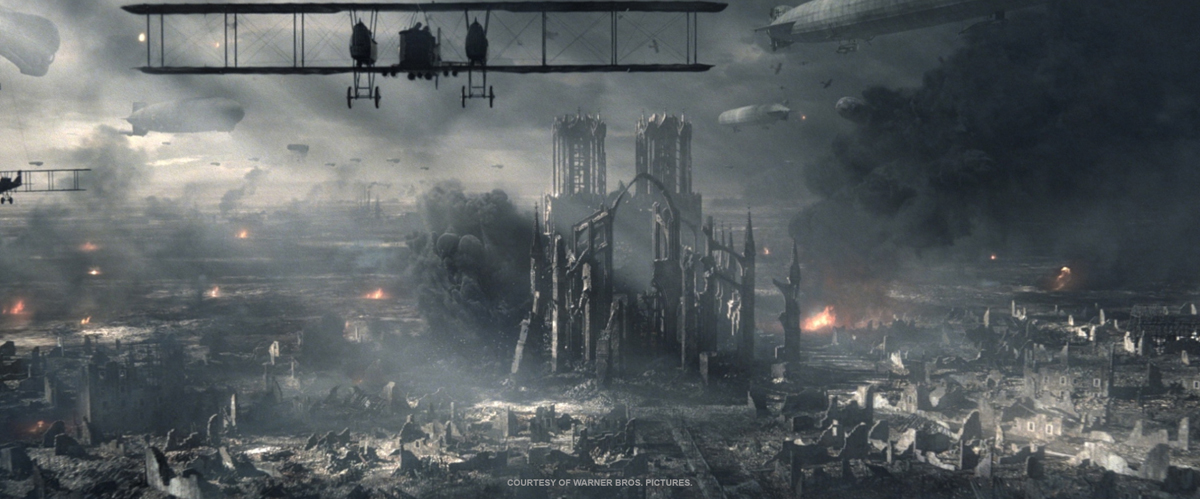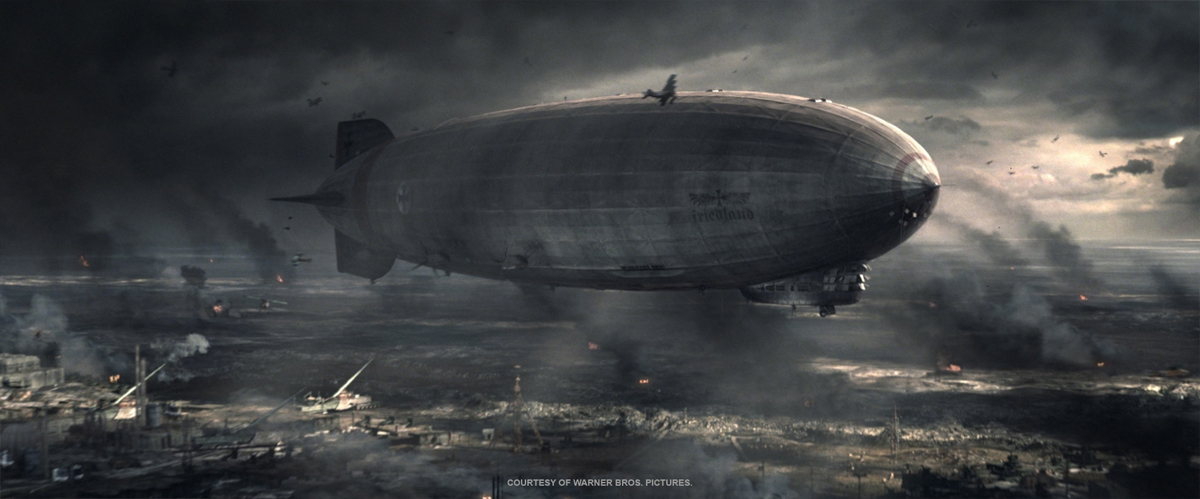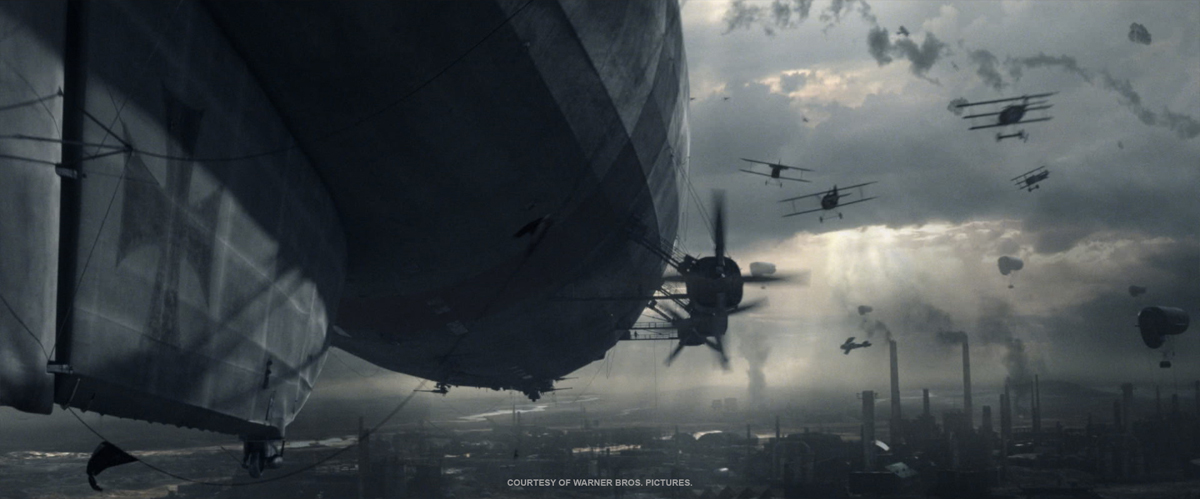After several years of freelance, Thilo Ewers joined the team of Pixomondo in 2008. He has worked on films such as NINJA ASSASSIN, 2012 or THE LAST AIRBENDER.
What is your background?
After a classical art education I achieved my Diploma at the Institute of Animation and Visual Effects at the Filmakademie Baden-Wuerttemberg. After a lot of freelance I started working for Pixomondo in 2008.
How was your collaboration with director Zach Synder and VFX supervisor John Desjardins of production?
I must say pretty awesome. We had a lot of freedom in designing the sequence.
Can you tell us how Pixomondo got involved on this film?
I think Zack and DJ must have seen THE RED BARON (a picture Pixomondo worked back in Germany). It is set during World War 1 and has a lot of dogfights and battlefield scenes. The VFX Supervisor on that show was Rainer Gombos, who also was the VFX Supervisor on SUCKER PUNCH at Pixomondo.
What are the sequences made by Pixomondo on this film?
We worked on the complete World War sequence which is the second dream sequence.
Can you explain the creation of the shot when Baby Doll goes into the world of fantasy?
The shot of Babydoll entering her fantasy world was a challenge. We had 2 plates: the real world ballet room and the fantasy world cathedral ruin set in a greenscreen. Both plates had slightly different camera moves and lenses. Therefore we matchmoved the head and the bakground of both plates. In the meantime we finessed our digital double of Babydoll. In Nuke we aligned the plates with the geo of the head and reprojected the two plates over the whole shots. With a also projected mask we could blend the two together. With a geometry-based mask, we could blend certain areas of the two plates together.
How did you create this huge environment of war?
The World War 1 environment was a huge task in every aspect. First of all we made a map of the whole setting as it was layouted in the previs. We divided the whole sequence into subsequences/sets and began to define locations, ranges, angles, sun directions and distance. We ended up with a pretty good top map of the whole environment. This map was the base for our master scene in 3d and later in 2d too. As we got a lot of LIDAR scans of the sets, we could align all these in 3d to our map. We imported our matchmove camera as well and aligned everything perfectly. As the center of our map we chose the cathedral.
Then we started on building assets. Such as the cathedral, the gunners nest, the german headquarters with its industrial complex. As we had extreme camera moves in all these set we had to build them fully in 3d. We refined them later with paintovers or mattepaint extension. We also produce renders of all assets in different angles so that we could use them in matpaint and compositing as basis and cards for matte-extensions.
After this process we had a master scene with proxies of all-important features of our world. The cathedral, the German trenches, ruins and angels, the gunners’ nest, the German headquarters with the crash site of the hero zeppelin.
We evaluated in which scene we needed full 3d renders and where we could rely on a card based representation in Nuke. Mostly everything in certain distance is a card. We developed a way of paintings debris, stones and other small assets in the scenes such as the battlefield sequence. All the explosions, sky fires, smoke, dust, tracers were later done in nuke’s 3d space. For the matte generation we used deep compositing techniques. We also could use relighting techniques for interactive lighting. We tried to use as much real elements as we could. Cause they look the best. The production shots a lot of very nice fx elements. Furthermore we have quiet a nice library of motion elements in-house. But we still needed to produce a lot of 3d fx for the show: smokestacks, fires, tracers, spark, smoke tails. In fx heavy shots the animators put in placeholder fx elements to layout complicated scenes. That gave them and all other departments a very good impression of what we need to do. We used those layouts as a base for the timing position, look and feel.
How have you created and animated the mecha?
As we received a Marquette and a few concept and drawings from the art department we started on modeling the mecha. Its fully modeled and fully rigged with a lot of automated constrains for the legs and arms, the ammunition belt and the gun. We did the whole mecha inhouse. For its animation we looked at all the robot footage we could possibly find. It was always a challenge to animate this heavy, crazy comicy creature.
Can you explain the creation of the airplanes and the zeppelins?
The airplanes were a pretty normal task for us. As we worked on a lot of airplane heavy pictures, our 3d department already has a huge experience in building, shading and animating airplanes.
Our animation department looked at a practically every reference of airships we could find on the web, in movies and in the real world. The best reference for the crash was the real Hindenburg desaster. For the bg blimps they developed a procedural anim system with idle motions, turns, wobbles in the blimps etc. We also figured out that the holding cables of those blimps were a key to their floaty feeling.
How did you create the crash of the big zeppelin?
Shortly after we received the sequence we immediately started on that mini sequence. We figured that for postviz it would be the easiest to keep those shots together in one shot until the initial animation was done. After the postviz was done we divided the shots back and FX Department in Berlin startet the work. Under the supervision of our head of technology Mohsen Mousavi they had to build a lot of tools and techniques to burn the zeppelin and to collapse its skeleton and the cloth with it. Furthermore they had to take our fire system to the next level. There are a few shots where we enhanced the 3d generated fire with some fire elements.
The Berlin FX Department uses 3D Studio Max, Thinking Particles, Fume, Krakator and Afterburn. Most of them are cg some as I said earlier are enhanced with 2d practical elements.
How was the shooting of this sequence? What was the actual size of the set?
The set pieces for the sequence where pretty impressive. The Art Department builds trenches some interior of the cathedral and some battlefield patches. These pieces were all modular so they could connect them in multiple ways.
Is the extreme slow motions shots of Zach Snyder have caused you some troubles?
Yes. Mainly in the beginning and end shot of our sequence, where Babydolls gets in and out of the fantasy world. We worked on these shots in their original length and retimed them later to the designated speed.
Have you developed specific tools for this project?
We developed a lot of show specific tools which helped us to handle the sometime quiet challenging shots. We took our fire system to the next level and did a lot of RnD on deep compositing.
Pixomondo has many branches in Europe and worldwide. Which one worked on this show?
Under the guidance of the LA office every branch of Pixomondo worked on SUCKER PUNCH. (LA, BER, STR, FRA, SHA, PEK)
What was the biggest challenge on this project?
The Zeppelin Crash.
What are your softwares and your pipeline in Pixomondo?
Our main 3d software is 3D Studio Max. The Berlin FX Department uses 3D Studio Max, Thinking Particles, Fume, Krakator and Afterburn. Most of them are cg some as I said earlier are enhanced with 2d practical elements.
We used Photoshop for painting, Vue for some additional cloud creating and Nuke for the projection of the 360 environment.
How long have you worked on this film?
About 1 year
How many shots have you made and what was the size of your team?
220 shots, approx. 120 people globally.
What did you keep from this experience?
We really enjoyed working on such a creative show. Both Zack Snyder and DJ are incredible creative people. We also really loved the creative process and the creative freedom they gave us.
What is your next project?
I am currently working on the new George Lucas produced feature called RED TAILS and just finished up FAST FIVE.
// WANT TO KNOW MORE ?
– Pixomondo: Official website of Pixomondo.
– fxguide: fxpodcast about SUCKER PUNCH.
© Vincent Frei – The Art of VFX – 2011









